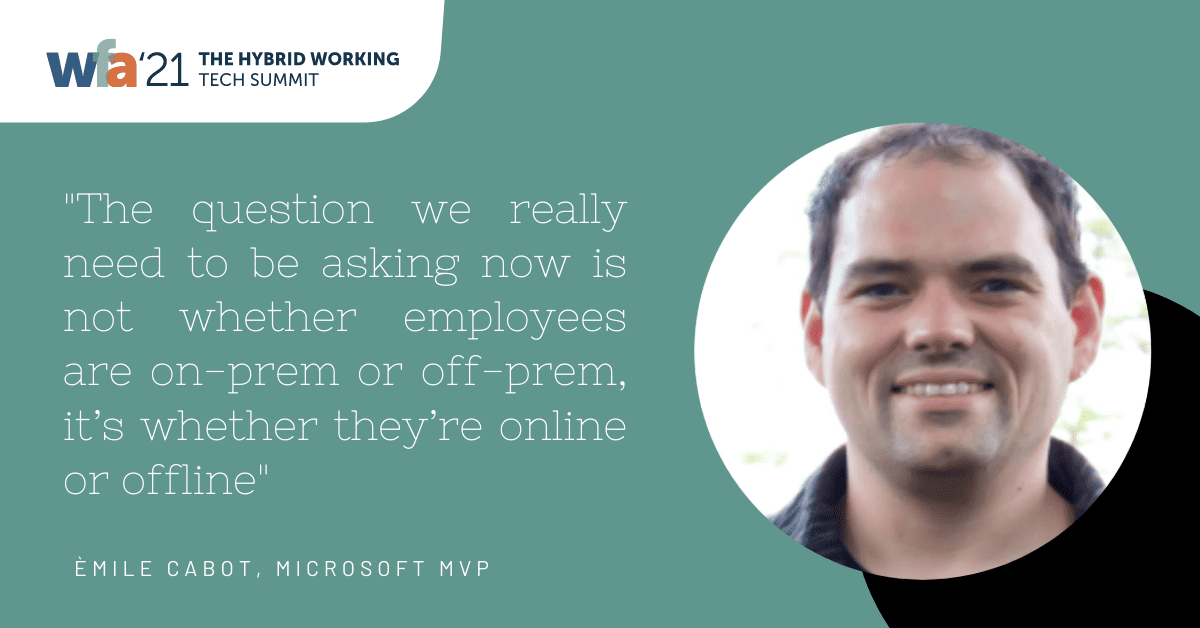Prior to the pandemic, a lot of enterprise tooling and monitoring and instrumentation was very well tuned for an on-premises workforce. But as we continue to embrace hybrid working, it’s important for businesses to recognise the limitations and challenges of legacy processes and to consider how best to enable anywhere work.
This was a key topic at our recent Work From Anywhere conference, and something explored by Microsoft MVP, Emile Cabot, in his fireside session with 1E’s Partner Sales Evangelist, Steve Melnyk and VP Customer Success, Sean Mee. In their discussion, they identified a that key challenge many organizations have run into when trying to maintain the same level of monitoring and management is blind spots in the endpoint estate. With workers now outside the parameters of the office, we can see patchy blind spots appearing whereby full visibility and control of assets can’t be achieved because users are now connecting very differently to how they have done historically.
It is becoming increasingly more difficult to manage devices. Steve explained that the things you could once do in an office when dealing with a corporation are no longer the solution. For example, you used to be able to simply refer to a Configuration Manager, dive in, and see what’s connected. But that lens is only as good as what’s there, and with a hybrid approach we’re running blind to visibility and the ability to run simple queries or report on what software could be installed, what policies are being enforced, what configuration devices have, etc.
How can we better prepare?
With the challenge of endpoint estate blind spots in mind, organizations need to better prepare and better enable the level of visibility required to account for workers outside the parameters we’re used to with an office-centric workplace. Emile provides some insight into how businesses can better prepare:
Adjust our mindsets:
First things first, we need to change our mindset and start thinking of organizations as parameterless. Stop thinking about what we can do on-prem and off-prem, and instead start to look at the entire organization as not being connected. How is everybody going to work now, without being in the office? For example, now that we no longer have the need for things like file servers, what options do we have available to obtain documents in a collaborative format that’s available to users offline.

Consider new security risks:
Sean explained that in this always on/always connected world, we need to be able to manage folks regardless of network; whether they’re connected to the VPN and corporate resources, or whether they’re tethered to a cell phone working from a café. Emile expanded on this point, “this is the growing security concern – it’s not where [employees] are connected, its how” Organizations must be aware of where their employees are connecting from. A public network in Starbucks? Their private home WiFi? Etc. With these new security risks, we need the flexibility to not only control access to data, but also control authorization and authentication processes to restrict access based on where people are and what security risk they’re going to present themselves as.
Stop relying on network only systems:
A prevalent issue is relying on the network only systems\outdated info as your primary data source, when managing your endpoint environment. Internet management and the importance of real time insight into your endpoints will be instrumental for any company supporting hybrid workforce. More and more users will constantly be on the go, changing their corporate connections. As our apps need to be resilient, so do our systems management tools.
If you’d like to learn more about modern Digital Experience Management and how to tackle blind spots in your endpoint estate, why not check out the full session with Emile here.








